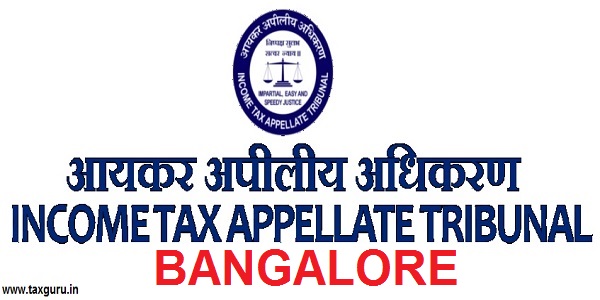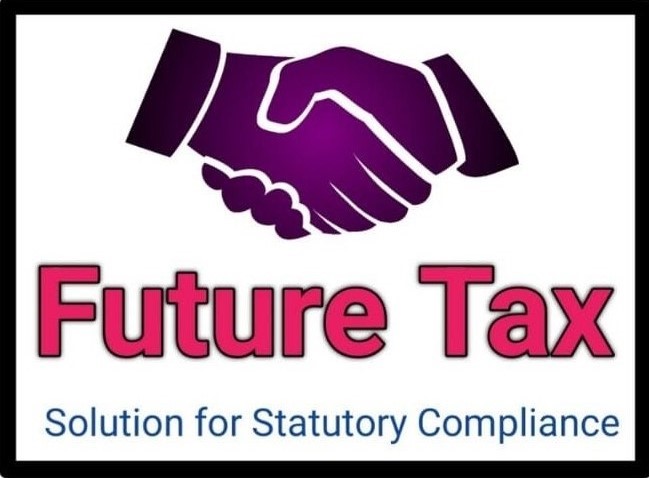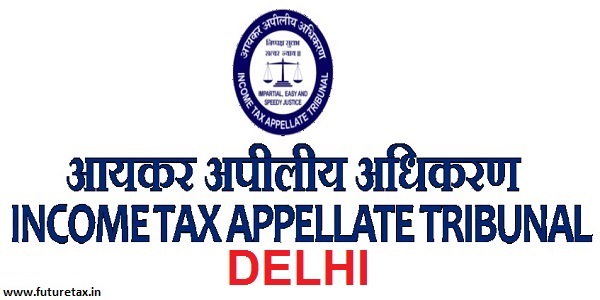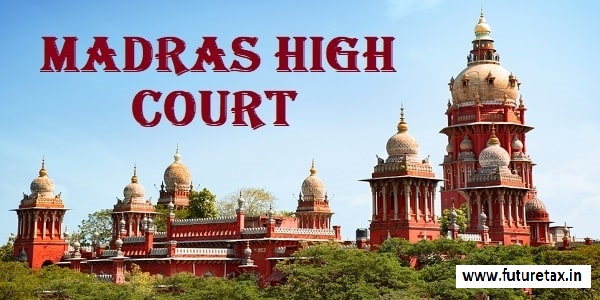
Completion of construction not required for claiming benefit u/s. 54: ITAT Bangalore in Tamil
- Tamil Tax upate News
- November 21, 2024
- No Comment
- 34
- 18 minutes read
DCIT Vs Bagalur Krishnaiah Shetty Vijay Shanker (ITAT Bangalore)
ITAT Bangalore held that exemption under section 54 of the Income Tax Act allowable based on the amount utilised towards construction of new house property where the construction is not complete.
Facts- During the course of assessment, AO noticed that the assessee had sold a property for a consideration of Rs. 18,70,00,000/- and after claiming deduction towards selling expenses and indexation on cost of acquisition has arrived at a long term capital gain of Rs. 12,81,11,799/-. AO further noticed that the assessee has claimed exemption u/s. 54 of the Income Tax Act, 1961 to the tune of Rs. 12,06,51,057/- and offered the long term capital gain of Rs. 74,60,742/- to tax. AO did not allow the exemption claimed by the assessee for the reason that the construction was not complete.
CIT(A) allowed the appeal. Being aggrieved, the present appeal is filed.
Conclusion- Hon’ble Jurisdictional High Court in the case of Sambandam Uday Kumar has held that the condition precedent for claiming the benefit u/s. 54 of the Act is that the assessee should have parted with the gain realised from sale of property by investing the same in either purchasing or in constructing a residential house and that completion of construction or occupation is not a requirement of law.
Held that there is no infirmity in the decision of the CIT(A) in allowing the exemption u/s. 54 of the Act based on the amount utilised by the assessee towards construction of new house property where the construction is not complete.
FULL TEXT OF THE ORDER OF ITAT BANGALORE
This appeal of the Revenue is against the order of the Commissioner of Income Tax (Appeals), National Faceless Appeal Centre, Delhi [CIT(A)] dated 15.12.2023 for Assessment Year (AY) 2016-17.
2. Revenue has raised the following grounds of appeal: –
“1. Whether the CIT(A) was right in fact and in law by deleting the disallowance made u/s. 54 when the construction of residential house was not complete in all respect as required under law.
2. Whether the CIT(A) was right in law in allowing the deduction u/s. 54 if the Act, when assessee was not entitled for the benefit of sec. 54, and when the construction of the property was not complete ad there was no residential ”
3. The assessee, an individual, filed his return of income for AY 2016-17 on 30.03.2017 declaring a total income of Rs.98,43,820/-. The case was selected for scrutiny and the statutory notices were duly served on the assessee. The Assessing Officer (AO) during the course of assessment noticed that the assessee had sold a property for a consideration of Rs. 18,70,00,000/- and after claiming deduction towards selling expenses and indexation on cost of acquisition has arrived at a long term capital gain of Rs. 12,81,11,799/-. The AO further noticed that the assessee has claimed exemption u/s. 54 of the Income Tax Act, 1961 (the Act) to the tune of Rs. 12,06,51,057/- and offered the long term capital gain of Rs. 74,60,742/- to tax. The AO also noticed that the assessee has claimed exemption u/s. 54 of the Act towards investment in house property which was under construction and not completed. The assessee furnished before the AO a valuation report certifying the total amount spent on construction to the tune of Rs. 6,66,93,130/-. The assessee also furnished the bank statement wherein the cash withdrawals to the extent of Rs. 4,78,19,230/- is withdrawn towards construction of the said house property. The AO did not allow the exemption claimed by the assessee for the reason that the construction was not complete and in this regard placed reliance on the decision of the Hon’ble Supreme Court in the case of Giridhar G. Yadalam vs. Commissioner of Wealth Tax [2016] 65 taxmann.com 148 (SC). The AO accordingly made a disallowance under section 54 towards the unconstructed portion of the house property.
4. Aggrieved, assessee filed further appeal before the CIT(A). Before the CIT(A) the assessee filed additional evidence with various construction agreements to support the claim of deduction u/s. 54 of the Act. The CIT(A) called for a remand report from the AO and since no response was received the CIT(A) proceeded to adjudicate the appeal on merits. The relevant findings of the CIT(A) in this regard are extracted below: –
“6. Even though the property was not completed during assessment proceedings, the AO proceeded to estimate the cost of construction of the house property. It is seen that the AO adopted the cost of construction at Rs.3,500 per sqft as per his own understanding of construction. The correct method would have been to refer valuation to an expert valuer prescribed under the act. The Assessing officer did not specify any defect in the documents submitted by the assessee. However, the inspector of income tax reported that the construction was not completed even after 3 years. The jurisdictional Karnataka High Court held in the case of Sambandam Uday Kumar 345 ITR 389 [Kar] that the intention of the legislature was to encourage investments in the acquisition of a residential house and completion of construction or occupation is not a requirement of law. The condition precedent for claiming benefit under the said provision is the capital gain realised from sale of capital asset should have been parted by the assessee and invested either in purchasing a residential house or in constructing a residential house. The essence of the said provision is whether the assessee who received the capital gains has invested in a residential house. Once it is demonstrated that the consideration received on transfer has been invested either in purchasing a residential house or in construction of a residential house, even though the transaction is not complete in all aspects and as required under the law, that would not disentitle the assessee from the said benefit. The discussion regarding construction vis-a-vis constructed by the Supreme Court in the case of Giridhar G Yadalam [2016] 65 taxman.com 148 was related to wealth tax and not regarding section 54. Regarding the utilisation of capital gains, it is clear that the appellant has fulfilled the conditions as prescribed for making a claim under section 54 of the Act and hence the disallowance of Rs.3,86,23,200/- as estimated unutilised portion of capital gains as held by the Assessing Officer cannot be sustained. As a result, the appeal is allowed.”
Aggrieved, Revenue is in appeal before the Tribunal.
5. The learned R. submitted that the Hon’ble Supreme Court in the case of Giridhar G. Yadalam (supra) has considered the issue of benefit under Wealth Tax on the property under construction and held that: –
“16. We have already pointed out that on the plain language of the provision in question, the benefit of the said clause would be applicable only in respect of the building ‘which has been constructed’. The expression ‘has been constructed’ obviously cannot include within its sweep a building which is not fully constructed or in the process of construction. The opening words of clause (ii) also become important in this behalf, where it is stated that ‘the land occupied by any building’. The land cannot be treated to be occupied by a building where it is still under construction. If the contention of Mr. Jain is accepted, an assessee would become entitled to the benefit of the said clause, at that very moment, the commencement of construction even with construction the moment one brick is laid. It would be too far fetch, in such a situation, to say that the land stands occupied by a building that has been constructed thereon. Even Mr. Jain was candid in accepting that when the construction of building is still going on and is not completed, literally speaking, it cannot be said that the building ‘has been constructed’. It is for this reason that he wanted us to give the benefit of this provision even in such cases by reading the expression to mean the same as ‘is being constructed’. His submission was that the moment construction starts the urban land is put to ‘productive use’ and that entitles the land from exemption of wealth-tax. This argument of giving so called purposive interpretation has to be rejected for more than one reasons. These are:
(i) In taxing statute, it is the plain language of the provision that has to be preferred where language is plain and is capable of one definite
(ii) Strict interpretation to the exemption provision is to be accorded, which is the case at
(iii) The purposive interpretation can be given only when there is some ambiguity in the language of the statutory provision or it leads to absurd We do not find it to be so in the present case.
17. No doubt, the purpose and objective of introducing Section 2(e)(a) in the Act was to stimulate productive assets. However, the event when such a provision is to be attracted is also mentioned in Explanation 1(b) itself carving out those situations when the land is not to be treated urban land. The Legislature in its wisdom conferred the benefit of exemption in respect of urban vacant land only when the building is fully constructed and not when the construction activity has merely started. On the contrary, if the argument of the assessee is accepted, that would lead to absurd results in certain cases. For example, what would be the position if the construction of the building starts but the said construction is abandoned mid way? If we accept the argument of the assessee, in such a case, assessee would be given the exemption from payment of wealth tax in the initial years and the same benefit would be denied in Page 15 15 the year when it is found that construction was abandoned and, therefore, not complete. It would result in granting of benefit in the previous year(s), though that was not admissible. Such a situation cannot be countenanced. Presumably, because of this reason, the Legislature wanted to treat only that land to be excluded from the definition of ‘urban land’ at the stage when the building has been fully constructed on the said land.”
The learned D.R. accordingly argued that the property, the construction of which is still not completed cannot be considered for the benefit u/s. 54 of the Act.
6. The learned A.R., on the other hand, relied on the order of the Hon’ble Jurisdictional High Court in the case of PCIT vs. Gopalaswamy [(2016) 384 ITR 307 (Kar)] to submit that in the said decision the Hon’ble High Court has considered the decision of the Hon’ble Supreme Court in the case of Giridhar G. Yadalam (supra) and distinguished the same. The learned A.R. further argued that the CIT(A) has rightly relied on the decision of the Hon’ble Jurisdictional High Court in the case of Sambandam Uday Kumar 345 ITR 389 [Kar] wherein it has been held that the condition precedent for claiming the benefit u/s. 54 of the Act is that the assessee should have parted with the gain realised from sale of property by investing the same in either purchasing or in constructing a residential house and that completion of construction or occupation is not a requirement of law. Accordingly, the learned A.R. argued that the CIT(A) has correctly allowed the exemption u/s. 54 of the Act.
7. We have heard the rival contentions and perused the material on record. The assessee, during the year under consideration, has sold a residential property for a sum of Rs. 18,70,00,000/- and after claiming cost of acquisition and cost of selling arrived at a capital gain of Rs. 12,81,11,799/-. The assessee purchased 4 tenements on a single property for a consideration of Rs. 5,39,71,857/- and upon demolishing the tenements proceeded to construct a house by utilising the capital gain to the extent of Rs. 5,57,79,200/-. The assessee also deposited Rs. 1,09,00,000/- in capital gain account scheme. Accordingly, the assessee claimed an amount of Rs. 12,06,51,057/- as exempt u/s. 54 and offered the balance of Rs. 74,60,742/- as capital gain. The assessee, in support of the claim of exemption u/s. 54 of the Act, furnished copy of valuation report from the Valuer estimating the cost of construction at Rs. 6,66,93,130/-. The assessee also furnished the bank statement to evidence the withdrawal of cash towards construction of the house. The AO based on the inspection carried out by the Inspector noticed that the construction of the property is under progress and not completed. The AO did not accept the valuation report estimating the cost of construction and reworked the cost of construction for the completed portion of the construction at Rs. 3,500/- per sq. ft. to restrict the amount of exemption u/s. 54 to Rs. 2,80,56,000/-. Accordingly, the AO made disallowance of Rs. 3,86,23,200/- being the difference between the value adopted by the assessee and the amount estimated by the AO. The AO did not allow the claim of exemption 54 of the Act also for the reason that the assessee did not submit any bills and contract agreements for the construction. Before the CIT(A) the assessee furnished the construction agreements and other documentary evidences in support of the claim that the money has actual been invested in the construction of the property. The assessee also furnished certificate from BBMP in support of the claim that the house construction is completed. The CIT(A) allowed the claim of exemption u/s. 54 of the Act as made by the assessee and deleted the addition made by the AO by placing reliance on the decision of the Hon’ble Jurisdictional High Court in the case of Sambandam Uday Kumar (supra).
8. The limited issue for our consideration in this appeal is whether the exemption u/s. 54 of the Act can be allowed based on the amount utilised out of the sale consideration towards construction of the property even if the construction is not complete. In this regard we notice that the Hon’ble Karnataka High Court in the case of C. Gopalaswamy (supra) has considered similar issue and held that: –
“6. We have heard the learned counsel for the parties and perused the record.
7. If the reasons recorded by the Tribunal as considered as it is, the issue is already covered by the decision of this Court in case of CIT Sambandham Udayakumar reported in .345 ITR 389. If the Tribunal has followed the said decision of this Court, no substantial question of law would arise for consideration in the present appeal.
8. However, learned counsel for the appellant raised two contentions:
i) One was that the since the earlier decision of this Court in case of Sambandham Udayakumar (supra), the tax amount was less, the matter was not carried before the Apex Court and therefore, the said decision may not be holding the field
ii) The learned counsel in furtherance of his submission contended that as the word used is “constructed” completion of construction is sine qua requirement and in absence thereof, the, deduction cannot be claimed and therefore, the Tribunal has committed He also relied upon the decision of the Apex Court in case of Giridhar Yadalam vs. Commissioner of Wealth Tax reported (2016) 65 Taxman.com 148(SC) and contended that, similar word was interpreted by the Apex Court and was found that the construction ought to have been completed.
9 . In his submission, since the construction was not completed in the present case, the Tribunal ought not to have allowed the appeal and the matter may deserve consideration.
10. In the first aspects, we are not impressed by the submission that, since tax amount was less and the matter having been riot carried before the Apex Court, the efficacy of the decision of this Court in Sambandham Udayakumar case referred supra would be lost so far as applying principles a binding precedent is When a co-ordinate Bench of this Court has already taken a view in normal circumstances, the departure therefrom is not permissible unless there are strong and valid reasons or the Apex Court has taken a different view.
11. Attempt to rely upon the decision of the Apex Court in case of Giridhar Yadalam is ill founded because in the said case before the Apex Court, the question arose for making distinction between the land and building for the purpose of wealth tax and for the purpose of exemption. Further, the language in the section is “Construction is done with the approval of the authority”. Further, in clause (b) language was “Such a building has been constructed”. As per clause (a), the requirement was “the land is occupied” by any building. It is on account of said languages, meaning of the word “constructed” came up for consideration before the Apex Court. Whereas, in the present case, the relevant aspect is that, utilization of the capital gain in construction of a residential house. Such being the basic difference, we do not find that the said decision in case of Giridhar G.Yadalam referred supra would be of any help to the learned counsel for the Revenue.
12. The resultant situation would be that, issue stands covered by the decision of a coordinate Bench of this Court in case of Sambandham Udayakumar (supra). When the issue is already covered by the decision of this Court, we do not find that any substantial question of Jaw would arise for consideration as sought to be canvassed in the present appeal.
12. Under the circumstances, the present appeal is dismissed.”
9. Respectfully following the above decision of the Hon’ble Jurisdictional High Court we hold that there is no infirmity in the decision of the CIT(A) in allowing the exemption u/s. 54 of the Act based on the amount utilised by the assessee towards construction of new house property where the construction is not complete.
10. In the result, the appeal filed by the Revenue is dismissed.
Order pronounced in the open Court on 21st October, 2024.




